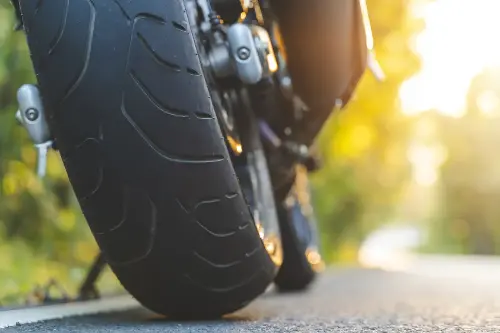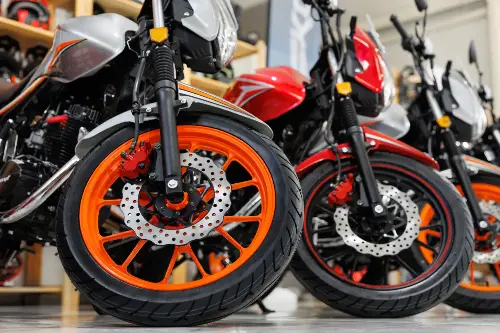Finding the perfect motorcycle tyre is akin to finding the ideal balance between yin and yang. It is an unending quest for harmony between the gripping prowess needed when cornering at spine-tingling angles and the durability desired for long, uninterrupted rides. The tyres are the sole link between the machine and the tarmac, a critical factor that determines not just how a motorcycle feels and performs but also the safety of the rider. This article delves into the five key elements to consider when selecting motorcycle tyres that cater to each rider's unique needs, ensuring a thrilling yet secure riding experience.

Understanding Motorcycle Tyre Composition
The first step towards selecting the proper motorcycle tyre is understanding their composition. Motorcycle tyres are constructed from a blend of natural and synthetic rubber, carbon black, metal, fabric, and various chemical compounds that define their characteristics. The ratio and quality of these materials determine the level of grip and longevity. High-performance tyres tend to have a soft rubber compound for improved grip but may wear out faster. On the other hand, touring tires usually have a harder compound, prioritising mileage over outright grip. A shrewd rider should weigh these factors against their riding habits to find the ideal compromise.
Riding Style and Tyre Selection
Your riding style significantly impacts the type of tyre that will best suit your needs. Sport riders who frequent tracks or enjoy spirited rides on winding roads will require tyres with soft compounds that adhere to the surface for better control during aggressive cornering. Conversely, regular commuters or long-distance tourers should look for tyres with harder compounds that provide increased longevity and are designed to cope with varying road conditions. Urban riders may prefer tyres with good wet grip capabilities to navigate through slippery conditions often found in cities.
Designed Purpose of Tyres: Matching Your Ride
Each motorcycle is designed with a particular purpose in mind, be it for sport, touring, commuting, off-road, or combinations thereof. It is vital to match your tyres to the intended use of your motorcycle. Manufacturers produce different tyre models that cater to these specific demands. Using sport tyres on a heavy tourer, for instance, may lead to quicker tyre wear and suboptimal handling due to mismatched tyre load ratings and performance characteristics. Check the motorcycle manufacturer’s recommendations, and ensure your tyre selection aligns with them.

Size Matters: Finding the Ideal Fit
Size compatibility is crucial in tyre selection, as it affects the handling, performance, and safety of the motorcycle. Always adhere to the tyre sizes recommended by the motorcycle manufacturer, which are usually found in the owner’s manual or on the sidewall of the current tyres. Incorrect tyre sizes can adversely affect the motorcycle's geometry and performance and can also be unsafe. Aspect ratios and tyre width are critical; a wider tyre might not necessarily grant more grip and could alter the handling characteristics of the bike adversely, while a narrower one could make the ride less stable.
Weather Considerations and Tyre Tread Patterns
The tread pattern of a motorcycle tyre is the primary factor in determining its suitability for different weather conditions. Tread patterns are responsible for channelling water away from the contact patch and maintaining grip during wet conditions. Riders who frequent rain-prone areas should look for tyres with deep grooves and siping to help prevent hydroplaning. During the colder months, tyres that can operate well in lower temperatures should be sought after, whereas in warmer climates, a tyre formulated to resist heat buildup is a prudent choice.
Monitoring Tyre Health
While selecting the perfect tyre is the initial step, maintaining them is equally important. Regularly checking tyre pressure, tread depth, and overall tyre condition is integral. Tyres should be replaced well before they reach the legal limit of tread depth, which is typically 1.6mm in the UK. Be vigilant for any signs of wear, damage, or ageing, such as cracks or bulges, as these can significantly compromise the safety and performance of the motorcycle.
In conclusion, striking the ideal balance between grip and durability in a motorcycle tyre boils down to the understanding and implementation of the factors discussed. By considering the composition, matching tyres to your riding style and motorcycle's purpose, ensuring size compatibility, accounting for weather conditions, and keeping an eye on tyre health, riders can enhance both their riding experience and safety on the road. Remember, tyres are a critical investment; choose wisely and ride confidently.
